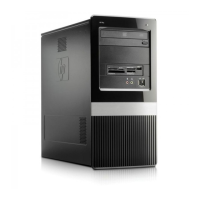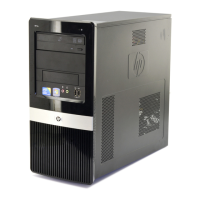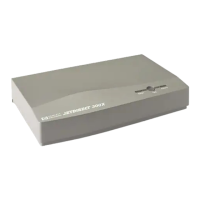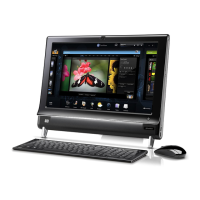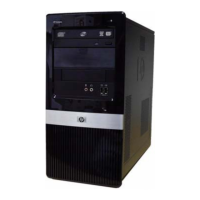For
HP
Internal Use
Only
Adding
Peripherals
to
OS
Configuration
MPE-iX
The
goal
of
this procedure is
to
help you find
the
device
path
and
driver before you shut
the
system down.
1.
Configure
the
new device.
If
you know how
to
configure
the
new device, continue with
SYSGEN.
If
you do not know how
to
configure
the
new device, check
the
IODEFAULT file
iodfault.pw.sys using
the
Editor
to
find
the
correct driver.
2.
Configure
the
device on
an
available
path
with like devices.
3. Make sure
the
system has been backed up.
4. Make sure
that
the
operating
system is ready
to
be
shut
down.
5.
Shut down
the
operating
system.
6.
Connect
the
device
to
the
system. Make sure
the
address
of
the
device is set correctly
to
match
the
configuration
in
SYSGEN.
7.
Power up
the
device
and
the
system. At
the
PDC
prompt,
access
the
PDC
Information
menu.
Use
the
All
command
to
display all system configuration and card
path
information.
Or
you can bring
the
system up
to
ISL
and
run
IOMAP
to
check
the
device configuration
and
device ID.
You can also load
the
Offline Diagnostic Environment
(ODE)
from whatever removable
media you have.
Then
run
MAPPER
to
check
the
device configuration
and
device ID.
8. Bring up
the
operating
system
and
finish testing
the
new device.
HP-UX
1.
Login as superuser (SU)
or
root.
2.
Enter
ioscan
-fC
disk. This indicates
the
current disk configurations:
the
used
and
unused
SCSI addresses.
3.
Shut down
the
OS
as you normally do.
4.
Set
the
jumpers
on
the
new disk
to
an
unused address.
5.
Open
the
system
and
install
the
disk. Note
the
termination.
If
you are installing
the
disk
at
the
end
of
the
cable, make sure
the
SCSI
terminators
are installed
on
the
disk.
6.
Boot
to
ISL
and
run
MAPPER
in
the
Off-line Diagnostic Environment
(ODE),
or
IOMAP,
to
confirm
that
the
hardware configuration is correct.
7.
Boot
to
HP-UX.
Enter
ioscan
-fC
disk
to
confirm
that
the
changes have been
made
to
the
system tables.
Further
information is available with
the
diskinfo command.
The
syntax
is:
diskinfo / dev /rdsk/ cxd0s2
where x represents
the
logical unit number (SCSI address) of
the
disk in question.
4-28 Configuration
